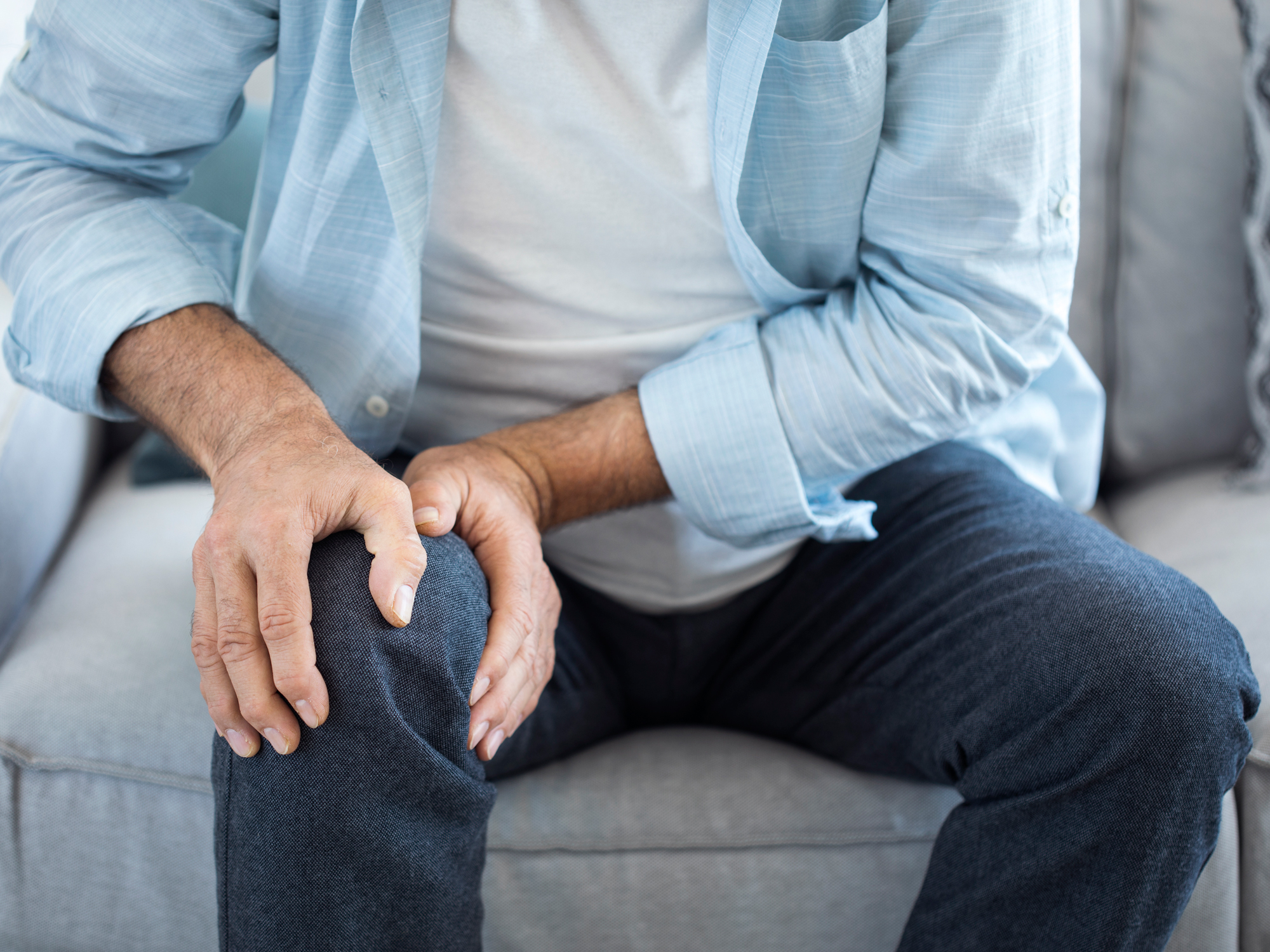Get Easy Health Digest™ in your inbox and don’t miss a thing when you subscribe today. Plus, get the free bonus report, Mother Nature’s Tips, Tricks and Remedies for Cholesterol, Blood Pressure & Blood Sugar as my way of saying welcome to the community!
What can you do about those aching knees?

Are you one of the 25 percent of U.S. adults that live with chronic knee pain?
Then you’re all too familiar with the swelling and stiffness, popping and crunching, weakness and instability that leaves you unable to do the activities you love — or even just walk up the stairs in your own home pain free.
Do you pop over the counter or prescription anti-inflammatories daily, trying to beat the pain and get back to your life?
If so, there is hope for pain-free knees and a better option than those medications to get the relief you’ve been searching for. But, first…
What caused your knee pain?
Your knee pain is more than likely the result of either osteoarthritis or an injury —or even a combination of the two.
Osteoarthritis occurs when the cartilage between the bones and joints of your knee wears down, allowing bones to rub together rather than giving them the protection and cushion they need. It’s a wear-and-tear condition that occurs when the cartilage in your knee deteriorates with use and age.
This results in nagging pain, loss of mobility and other complications. And, most prescription medications for arthritis not only don’t address the underlying cause of your condition, they can also lead to long-term dependency and a host of dangerous side effects.
Being overweight or obese increases stress on your knee joints, even during ordinary activities such as walking or going up and down stairs. It also puts you at increased risk of osteoarthritis by accelerating the breakdown of joint cartilage.
An injury to your knee could also be the reason behind your pain. Some of the most common knee injuries are meniscal injuries, anterior cruciate ligament and posterior cruciate ligament injuries, tendonitis and bursitis.
A lack of strength and flexibility are among the leading causes of knee injuries. Tight or weak muscles offer less support for your knee because they don’t absorb enough of the stress exerted on the joint.
Your prescription to overcome knee pain
Because weak muscles are a leading cause of knee pain, you’ll benefit from building up your quadriceps and hamstrings, which support your knees.
And because tight muscles also can contribute to injury, stretching is important. Try to include flexibility exercises in your workouts.
Before starting any exercises, it’s a good idea to warm up first. You could ride an exercise bike for five minutes, take a brisk walk or even just march around your house. The point is to get your blood flowing and your muscles ready to work.
Here are some exercises for you to try:
- Bridges – Lay on your back on the floor. Bend your knees, keeping your feet flat on the floor. Push up through your heels, raising your hips toward the ceiling while your back remains on the floor. Hold for a count of five and then lower. Repeat 10 times.
- Straight Leg Raise – Lay on your back with your legs stretched out in front of you. Slowly raise your right leg approximately six inches, contracting your quadriceps muscle (in the front of your thigh). Hold for a count of five and lower. Do the exercise 10-20 times and then repeat on for your left leg.
- Knee Squeezes – Lay on your back with your knees bent, feet flat on the floor. Place a rolled towel, small pillow or ball between your knees. Squeeze your knees together pressing into the object and hold for a count of five. Repeat 10-20 times.
- Hamstring Curls – Stand while holding onto a chair or counter top for balance. Slowly lift your right heel, bringing it to your buttocks and hold for a count of five then lower. Do 10-20 repetitions and then repeat on your left side.
- Calf Raises – Stand facing the back of a sturdy chair, other support such as the back of a couch, or a wall bar at the gym. Slowly raise your heels as high as you can, then lower. Do three sets of 10-15.
And, don’t forget to stretch. Here are some stretches that are excellent for helping you overcome your knee pain:
- Quad Stretch – lie on your back in front of a doorway with your hips in line with the entryway. Keeping your left leg straight out in front of you, place your straight right leg up on door jam, keeping a small bend in your right knee. Inch your way forward for a deeper stretch or back if you need less sensation. Stay here for 10 to 15 slow, deep breaths, and then switch sides.
- Glute Stretch – Lie on your back with your feet on the floor, then cross your right ankle over your left knee and clasp your hands behind your left thigh. Slowly and gently pull your left knee toward your chest. Repeat on the other side.
While you might think your knee pain is a good reason to skip the gym, it’s actually the reason you must keep moving. Use the exercises and stretches above to overcome your knee pain naturally and get back to the activities you love.
Editor’s note: If you suffer from chronic pain and conventional medicine has let you down, or you just want to escape the potential dangers of OTC and prescription drugs even for occasional pain, do yourself a favor and read Dr. Mark Wiley’s guide, Conquering the Pain: An Alternative Doctor’s Fresh Look at the Newest and Oldest in Alternative Pain Therapies. Click here for a preview of what you’ll find!
Sources:
- Prevalence of Knee Pain Increased During 20 Years — Medscape Education Clinical Briefs
- Knee pain — Mayo Clinic












